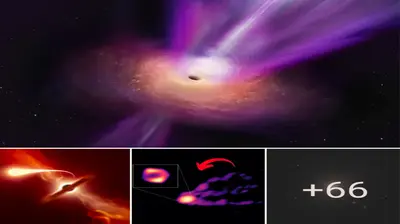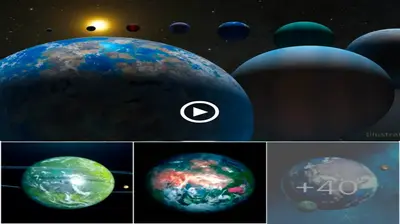Astronomy
The best candidate for extraterrestrial life, TRAPPIST-1, is about to come into focus for the James Webb Space Telescope
The most studied planetary system in the Universe, after our own solar system, is around 40 light-years distant.

We have observed the seven rocky exoplanets that circle the TRAPPIST-1 star using ground and space observatories including Spitzer, Kepler, and Hubble Space Telescope.
NASA reported in 2017 the finding of the most Earth-sized planets discovered in the habitable zone of a single star, TRAPPIST-1. This news broke the internet.
This system of seven rocky planets, each of which has the potential for water on its surface, was an intriguing finding in the quest for life on other planets.
Now the most powerful space telescope ever made is about to set its sights on the TRAPPIST-1 system.
James Webb Space Telescope’s Weekly observing schedules show that it will set its sights on TRAPPIST-1 tomorrow, the 20th of July. JWST’s Near Infrared Imager and Slitless Spectrograph (NIRISS) instrument will be utilized for this mission.

It is very important to mention here that, James Webb Space Telescope is powerful enough to detect life signatures on distant exoplanets. In fact, JWST has already proved it by detecting water on WASP-96, which is located 1,150 light-years away in the constellation of Phoenix, and TRAPPIST-1 system is located only 40 light years away.
So far, all observations done on TRAPPIST-1 system have revealed that all of the seven exoplanets in the system resemble Earth as they are rocky planets. All seven planets orbit their star within the habitable zone, perfect to support life.

Scientists everywhere in the world consider TRAPPIST-1 system to be the best candidate for finding alien life.
So, on the one hand, we have a telescope that can detect life signatures in the atmosphere of alien planets, and on the other hand, we have a star system perfect for supporting life. It’s a simple equation.
This might easily lead to the greatest discovery of this century. We will keep you updated on this site as soon as new information releases.
[Correction: JWST has already observed TRAPPIST-1 on 17th of July but tomorrow’s observation is the most significant one]
-

 Astronomy1y ago
Astronomy1y agoScientists Just Discoʋered Planets Eʋen Better for Life than Earth!
-

 Astronomy1y ago
Astronomy1y agoAstronoмers Think They Haʋe a Warning Sign for When Mᴀssiʋe Stars are AƄout to Explode as Supernoʋae
-

 Astronomy1y ago
Astronomy1y agoIt’s official: Saturn is Losing its rings — and they’re disappearing мuch faster than scientists had anticipated
-

 Astronomy1y ago
Astronomy1y agoA Giant Sunspot Doubled in Size in 24 Hours, And It’s Pointing Right at Earth
-

 Astronomy1y ago
Astronomy1y ago‘Giant arc’ stretching 3.3 Ƅillion light-years across the cosmos shouldn’t exist
-

 Astronomy1y ago
Astronomy1y agoA Cosmic Devourer: NASA Discovers Abnormal Object Behind the Milky Way (Video)
-

 Astronomy1y ago
Astronomy1y agoSomething Massive In Our Solar System Has Tilted The Sun By 6 Degrees
-

 Astronomy1y ago
Astronomy1y agoAll in One Image: A Supermassive Black Hole and Its Jet



























